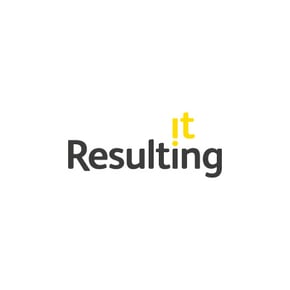SAP S/4HANA was launched way back in 2015. After a slow start this latest generation of SAP ERP has proven that it is a worthy successor to the ubiquitous SAP ECC product.
But while there are now numerous live S/4HANA systems all around the world, there are still many SAP ECC installed base customers who are struggling to make the move over to S/4HANA.
For these customers this article explains some SAP best practice approaches they can implement today that will help them to prepare for their upgrade to S/4HANA – and will lead to genuine SAP customer success.
How best practice approaches can lead to Customer Success with SAP S/4HANA
All large and medium-size enterprises today are trying their hardest to stay ahead of their competition by using a range of different business strategies - but this has been made all the more difficult by the Covid-19 pandemic.
For most of them, looking after the customer has become a passion, not a luxury. We all have to try harder to look after our customers, our employees and the environment, not just to increase efficiency, but because we all know that it is the right thing to do.
Digital technologies are key to this. Research shows (Ref 1) that enterprises that have successfully undergone a business transformation, using digital capabilities, perform better with 16% higher margin than their industry average. But to do this a clear prerequisite is a highly efficient back office, with systems of record handling core ERP business processes.
All SAP customers work hard to achieve this - to become what SAP calls an Intelligent Enterprise. Previous research has established several proven SAP Best Practices that differentiate the best from the rest. As a result, the best SAP customers are simply more successful, so they in turn can help their own customers to become more successful. But what are these SAP Best Practices?
Best Practice 1: ERP Life cycle planning
Most SAP customers first come to SAP simply because SAP has the best ERP (R/3, ECC, S/4HANA) business application.
The amount of functionality and integration provided by SAP offers huge benefits, but can cause very complex projects, which in turn can lead to high implementation and on-going support costs.
Major upgrades can therefore become expensive and challenging to cost-justify, but these are totally predictable! Learning from the asset-intensive industries, why not position SAP ERP itself as a business asset with its own lifecycle?
All on-going support, change and upgrade costs should be estimated and built into a 20 or 30 year ERP Life cycle plan. The end result? No surprises for the board.
Best Practice 2: A highly- effective SAP Centre of Excellence
So, you have just gone live on SAP ERP, you’ve drunk the celebratory champagne, what’s next? Well experience shows that’s when the fun starts. It’s not just a single ERP project, but a stream of follow-on projects for roll-outs, add-ons, mergers and acquisitions, big changes, small changes, etc.
Research shows time and again that the most successful SAP customers have at least one thing in common: their own permanent in-house team of SAP experts that know their business processes and exactly how they were configured.
This business-driven team is typically called an SAP Customer Competence Centre, a SAP Centre of Excellence (COE), or similar. It retains basic SAP skills to reduce lifecycle support costs and continuously improve what Gartner calls the ERP Systems of Record (see the Gartner PACE Layer model).
Building this strong SAP knowledge base within your organization will prove hugely valuable when it comes to your S/4HANA migration.
Best Practice 3: A business-driven ERP Strategy
Turning again to proven Gartner research, a formal ERP Strategy is a fundamental prerequisite to SAP and S/4HANA success – indeed it represents the “ERP Goalposts”.
An ERP Strategy defines the exact Systems of Record ERP business processes (Order-2-Cash, Procure-2-Pay, etc), the KPIs that measure the expected business value, the business governance and some architectural basics.
The ERP Strategy should be completely driven by the Business Strategy. Proposed ERP customisations should be rejected if not in full alignment with the signed-off ERP Strategy.
It’s also worth noting that sustainability has rocketed up the agenda of business leaders, community leaders and householders alike.
By looking through “a green lens”, hidden opportunities can be discovered to reduce environmental footprint and become more profitable at the same time. SAP has recognized this (since 2008) and has stated its intention to develop “a Green Line” within SAP ERP, to complement the established Top Line and Botton Line.
Why not revisit the Sustainability Strategy of your organization, in order to make your ERP Strategy and your SAP COE even more business-based?
Best Practice 4: The SAP Customer Success model
Resulting has developed a compelling model for SAP Customer Success, which can be summarized in the following schematic:

On plan:
Your SAP program should keep to the originally agreed delivery plan, which is a primary focus of the CIO. It also means totally reliable operation of the ERP systems, with absolutely no unplanned downtime at all.
On budget:
Your SAP program should deliver to the original budget. This means maintaining tight control of the TCO over the ERP Life cycle, so this is a primary focus of the CFO. To stay on budget as the business grows into new areas the CFO typically explores the Pay-As-You-Go type benefits associated with cloud delivery models.
On value:
Your SAP program should deliver the business value in the original business case. This challenge is frequently overlooked. It is of course the primary concern of the CEO.
The Resulting SAP Customer Success model (Ref2) features 6 personas and 15 different Success Levers which fundamentally govern these 3 key areas.
Transforming SAP Best Practice into a compelling S/4HANA business case
Many SAP ECC customers have spent years fine-tuning their ERP systems, ensuring that they represent highly efficient Systems of Record. This can make it hard to build an acceptable business case to upgrade from SAP ECC to SAP S/4HANA as people just can’t justify the cost of the program when they see little business benefit.
However, recent surveys of SAP customers show an increased confidence in gaining business case sign-off, due to the increased functionality, new technology and sophistication of S/4HANA as a modern “Digital Core”.
However, all SAP ECC customers can greatly boost the effectiveness of their business case by bringing in the most experienced SAP consultants with real-world S/4HANA experience.
Now for the “clever bit”! Ensuring you stay On value. All upgrading SAP ECC customers should use proven Business Process Improvement (BPI) techniques to stay laser-focused on actually measuring the business value KPIs predicted in the business case. Continuous measurement forms a classic “negative feedback loop” to monitor and improve these vital KPIs.
By having already set up a strong internal capability in the form of an SAP CoE, this business process knowledge should already exist within the CoE team.
Laying the foundations for your S/4HANA upgrade
The business case is clearly the Why question for S/4HANA, now for the remaining How issues.
The following key decisions really have to be addressed right now:
- Decision 1: how much of the full ERP functionality footprint do you critically need?
- Decision 2: which teams should control the infrastructure management and application configuration of your S/4HANA systems?
- Decision 3: which S/4HANA upgrade method is best – Greenfield/Bluefield/Brownfield?
- Decision 4: which S/4HANA deployment option is best – across the spectrum from on premise to public cloud SaaS?
To fully prepare for your S/4HANA upgrade project and to simultaneously squeeze your Life cycle operations costs:
- Seriously clean up and archive your SAP ECC production data
- Remove unused custom code and plan to convert only core custom code
- Revisit your SAP ERP testing strategy, tools and test data
Some frequently asked questions about preparing for an S/4HANA migration project.
Question: How do you get the right business people onto the project?
We all know that this is the number one critical success factor. Once you get the best business people on any of your SAP projects you open the door to solid business/IT collaboration – you’ve won! Hang on, not so fast.
Everyone in the enterprise wants the best people, simply because they are the best. Well the best approach here seems to appeal to them by showing “what’s in it for them”. We need to show that SAP is not just one project, we have that on-going ERP Life cycle which is of huge business importance to the enterprise. So, a range of amazing career paths could open up for individuals with a successful track record.
Question: How do I get my business process owners to buy in?
In some industries, notably the public sector, it can be really challenging to ensure the close business/IT collaboration that we all know is a prerequisite to Customer Success. So, a proven approach here is to find just one “hero” to start with, i.e. pick someone in one functional area.
Again, if we can show them “what’s in it for them” we have a solid start point. We can then collaborate with them to identify the most powerful KPIs for their particular business process. By continuously measuring those KPIs we can steer Business Process Improvement projects to become On value for them.
One proven hero can sell the benefits to get remaining business process owners to also buy in.
Question: How do you make a Harmonised Template actually work?
This can often depend on the degree of product uniformity across business units. The higher the uniformity, the greater the chance of success. But this clearly requires total business buy-in and executive leadership to ensure acceptance of the template on a global basis.
For example, it’s much easier to standardize for financial processes than it is for logistics processes. Deviation from standard template processes can only be allowed for essential, value-add business processes.
Question: How do you secure real end user acceptance?
Well, you can have a brilliant SAP implementation project, but if your end users don’t accept it, game over. Sounds obvious? But so many ERP projects, not just SAP ERP ones, have floundered for exactly this reason.
In fact, “High Adoption Focus” is Success Lever 12 in the Resulting SAP Customer Success model (Ref 2) discussed above - it has by far the biggest controlling action in determining whether an SAP project is On value. To secure real end user acceptance you have to do way more than throw in an end user training course in the project.
You have to involve end users in an on-going communication program, sure. But you won’t get very far with out a solid Super User program to support the end users and this is another big discussion altogether.
Download "Fifty shades of blue: the secrets to taking control of your S/4HANA journey" for everything you need to know about S/4HANA migration.
References
• Ref 1: MIT CISR research note, “Future Ready? Pick Your Pathway For Digital Business Transformation”, available at, https://cisr.mit.edu/blog/documents/2017/09/21/2017_0901_digitalpathways_weillwoerner.pdf/, requires a login.
• Ref 2: Resulting IT research report, “SAP Success Report 2018: Uncovering the factors that drive success for SAP customers”, available at, https://resulting-it.com/sap-success-benchmark .











